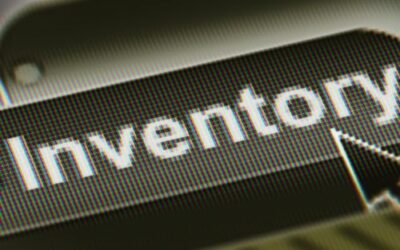What is IT inventory management and how can it make your working life easier? Read this short guide now to discover what it is and why you need it!
Why Production Companies Should Use Asset Tracking Software
In this guide:
- How Asset Tracking Software Works
- The Challenges of Asset Tracking in Film
- Lots of Assets
- Lots of Crew Members
- Loss or Damage of Rented Equipment
- The Benefits of Asset Tracking Software For Film
- Streamline Your Operations
- Improve Inventory Management
- Reduce Costs
- More Secure Bookings and Rentals
- Scale Your Production
- Asset Tracking Software Solutions
- QR Tracking
- RFID Tracking
- GPS Trackers
- itemit’s Asset Tracking Software
In this guide:
- How Asset Tracking Software Works
- The Challenges of Asset Tracking in Film
- Lots of Assets
- Lots of Crew Members
- Loss or Damage of Rented Equipment
- The Benefits of Asset Tracking Software For Film
- Streamline Your Operations
- Improve Inventory Management
- Reduce Costs
- More Secure Bookings and Rentals
- Scale Your Production
- Asset Tracking Software Solutions
- QR Tracking
- RFID Tracking
- GPS Trackers
- itemit’s Asset Tracking Software
There are quite literally many moving parts on any film production set. Keeping track of all your production equipment across all your different sites and locations can be a logistical nightmare. With different team members checking equipment in and out there are a huge number of assets to manage at any one time. Relying on spreadsheets for inventory lists and asset management is a time-consuming process that is prone to human error. But, with asset tracking software this can all be automated. Streamline your operations resulting in more time and less costs.
Asset tracking software is a digital, centralised system that allows your team to track important details about each asset in real time. With asset tracking software you can keep track of all your lights, mics, booms, tripods, light reflectors and anything else you need. All the necessary information for each piece of equipment, who it’s assigned to, what project it’s on, is stored in an asset register. Asset tracking software will save your production time and money so you have everything you need to create the next blockbuster.
How Asset Tracking Software Works
Tracking assets works by combining the use of asset tags with asset tracking software. The asset tags can be RFID tags, GPS trackers or QR codes, these tags are physically attached to assets and assign the asset to a unique identification code. The various asset tags offer different uses and benefits depending on the application but they all achieve the same outcome: identifying and communicating the location of your asset.
All of the data from the asset tags is stored in a centralised system, creating an asset register. Effectively, you log digital copies of your assets in the asset management system. You can add various information to the digital copies, such as who the assets are assigned to, where they are, and what state they’re in. Therefore, instead of finding specific information within a spreadsheet, you’ll be able to open an asset’s profile to view all of the data you need to know about that asset. With the advancement of modern tools, asset tracking software can also provide information on asset value, inventory management, maintenance planning, as well as real-time data on asset lifecycle management.
The Challenges of Asset Tracking in Film
1. Lots of Assets
A huge amount of equipment go into the production of any film. From the lighting, to the sound, to the editing equipment, the list goes on. This amounts to a big investment and, like with any investment, you need to look after it. It can be easy to lose track of things as they move around set, exchanged between crew members and are taken off to various locations. This poses a challenge to ensuring the longevity of your equipment and maximising the money and resources you’ve put into your production.
2. Lots of Crew Members
It takes a lot of people to bring a film together. With various teams and companies working together and sharing assets, knowing who has what and when can get complicated. Equipment can easily become mixed up, misplaced, or end up in the wrong hands. Asset tracking software can help you to avoid these mishaps by streamlining the whole operation. With fixed asset registers and automatic data collection you can keep a log of who an asset has been assigned to, where it is and can help to ensure it is returned on time.
3. Loss or Damage of Rented Equipment
Many film productions, large and small, rely on rented equipment to make the next big picture. But with rented equipment you always run the risk of added costs in the event the asset is lost or broken. This can result in spiralling costs that can really put a dent in an already tight budget. Asset tracking software can offer you extra security and visibility around the movement and behaviour of assets as well as smarter asset maintenance.
The Benefits of Asset Tracking Software For Film
1. Streamline Your Operations
Using spreadsheets is usually the first go-to option for managing assets but this manual process can quickly become long and laborious. As your production grows, so do the number of assets, meaning more data and more moving parts to track and manage. Spreadsheets can become your system’s downfall since they are difficult to share with others, lack smart features, and are susceptible to errors.
Manual asset tracking is a very time-consuming process but with asset tracking software you can completely streamline your audit and daily operations. With itemit asset tracking software you can ensure your assets are where they need to be and with the right people, taking the headache out of asset tracking. When your team checks assets in and out the asset manager is automatically notified. Every time an asset is tracked, entered into the system, checked out, or repaired, data is collected. This improves accuracy, minimises errors, and reduces the time it takes to exchange assets. Using asset tracking software ensures you know what is happening to them as they move around set and from site to site.
2. Improve Inventory Management
Good inventory management is critical to the success of any operation and film productions are no different. Asset tracking software can improve your inventory management by informing you of what equipment you have, where it is, and who it has been assigned to. For example, if somebody requires multiple pieces of kit, you can bulk check them out with itemit’s equipment checkout system, then bulk move their locations to indicate that they’re with that company. Then, you’ll be able to run a report on the equipment that is on the move to the location and export it as a pdf, giving you a register of the equipment your client needs to sign for.
All of the data you collect will be pulled into a fixed asset register, providing you with an accurate and up-to-date record of your assets. This offers greater control and visibility of the financial data related to your assets. With itemit the process of creating fixed asset registers is simple. You can view, filter, manage, and export reports with ease, giving you a clear view on what you own and how the assets are behaving. A clean register will allow you to completely streamline your insurance and tax operations, allowing for clearer expense and more transparent insurance applications.
3. Reduce Costs
Limited film budgets can restrict the ability to purchase additional assets, and mean you need to make the most of what you have. Cost management is vital on small and large scale productions alike, and with effective asset tracking software you can make sure you’re getting the best out of your equipment. Asset tracking increases the visibility of assets location and user data, helping to reduce loss and theft.
Plus, asset tracking offers a smarter solution to maintenance. Good asset management extends the lifespan of assets by decreasing the need for maintenance and replacement. Asset tracking software allows you to take a more proactive approach to maintenance since it is much easier to maintain equipment if you know its history. With asset tracking software, you can set up automated reminders when it’s time to make routine repairs, resulting in fewer unexpected problems and the foresight to make them fit around your filming schedule.
4. More Secure Bookings and Rentals
Asset tracking software gives you the security you need when hiring equipment. Asset tracking software covers your back by ensuring you are compliant with your insurance. If you know where your assets are at all times then there is less associated risk, resulting in simpler invoicing and lower premiums for you. With itemit you can even set reminders for expired licences and insurance payments.
You can also use your asset tracking software as an equipment booking system. You can use itemit to log rentals to other users, companies, or anyone else for that matter! Overall, itemit asset tracking software creates a simple, effective, and transparent view of where your film equipment is and how it’s behaving.
5. Scale Your Production
As your production grows, itemit grows with you. Relying on spreadsheets to keep track of everything you own can make it difficult to scale your production. Whether you’re working on your first short film, or a feature-length production, itemit can support you every step of the way.
If you’re working on multiple films you can even use itemit for each one without needing to purchase new licences. Using automated asset tracking software you will be able to organise and forecast the equipment needed with ease so you can look at your filming schedule and work out what additional equipment you need to hire or purchase.
Asset Tracking Software Solutions
Asset tracking software is highly tailorable and offers a solution for every application. Get to know the right solution for you and make sure you know where your assets are on every location.
QR Tracking
Most of us are familiar with QR codes. The different patterns of black squares on a white background have become a familiar feature in our daily transactions. The unique pattern represents and links to information, and has become a popular solution in asset tracking thanks to its cheap and quick production. The popularity of QR codes in everyday life means you don’t need to purchase and use a third-party tag reader. Simply open your smartphone and scan the QR code, and up will pop all your asset’s information, allowing you to track and manage instantly.
With itemit asset profiles, you’ll be able to book assets out, add issues for maintenance, and view any amount of information, including user manuals – something that’s particularly handy if you’re onboarding new staff.
RFID Tracking
RFID tracking is a great solution for the film industry because, unlike QR codes, RFID tags don’t have to be visible so there’s no need to worry if an asset is going to be on camera. RFID stands for radio frequency identification and works by using radio frequencies to broadcast the location of the tagged asset.
RFID tags can either be active, passive or semi-passive, and offer different benefits depending on your use case. RFID tags come in various shapes and sizes meaning you can make them fit to your asset. RFID asset tracking requires a device (either a fixed or handheld reader) to pick up the tag. This greatly speeds up auditing assets as the only thing you need to do is pull the trigger on the RFID reader. The same is true for when you’re adding multiple assets to a new location, as itemit’s Quick Add feature speeds this process along. Keeping track of your assets has never been simpler.
GPS Trackers
GPS trackers are a great solution for tracking various pieces of large equipment, from moveable cameras to sound producing equipment. GPS trackers periodically update an asset’s location. This means that you get an automatic audit trail of where all of your equipment has been, allowing you to verify that equipment has arrived at its destination safely, minimising transport costs and reducing the risk of losses. With itemit, you’ll be able to use GPS trackers in tandem with QR code asset management. GPS tracking can both speed up and simplify your operations, giving you a robust view of how your assets are behaving.
itemit’s Asset Tracking Software
Asset tracking software at itemit is scalable, transparent, and efficient. With a full-equipped suite of helpful features, from equipment check-in and check-out functionality to bulk actions, you can seamlessly update and improve your current process. You’ll finally be able to move away from those never-ending spreadsheets. If you’d like to find out more information please contact the team at team@itemit.com or you can get started straight away and try the 14-day free trial by filling out the form below!
Asset Tracking Software for Film Production
Choose a better way to track your assets
Start your free 14-day trial now
Instant access. No credit card details required.
Related articles
IT Inventory Management: A Short Guide
IT Asset Management Made Simple
Having trouble organising your IT assets? Read this post now to find out how using IT asset inventory software can help immensely!
What IT Asset Management Is And Why You Need it
An IT asset management system can make a huge difference in your workplace. It can help you to have more control over your IT assets. Read more here!





